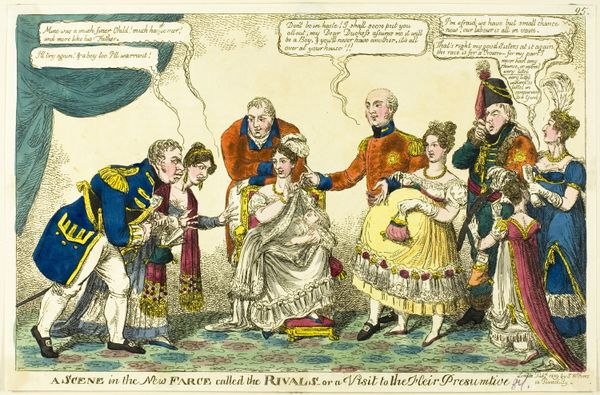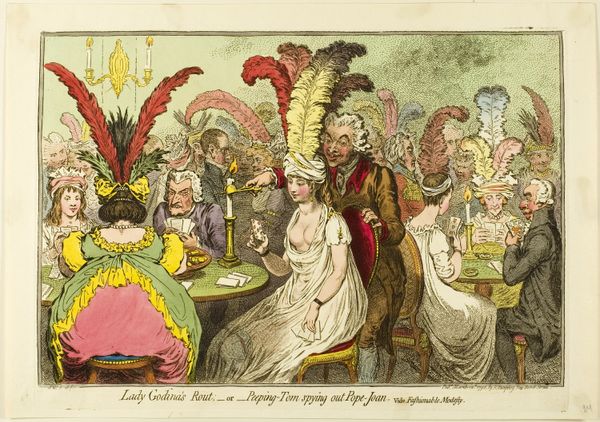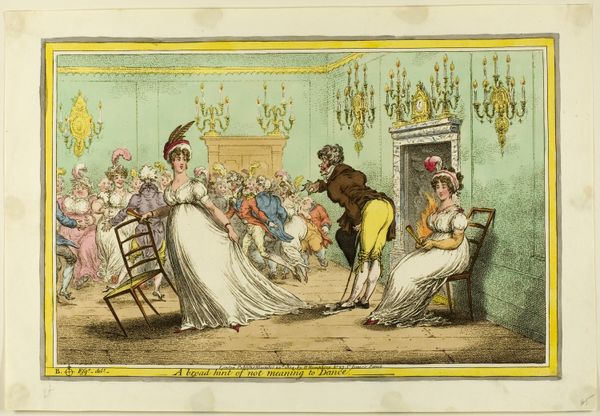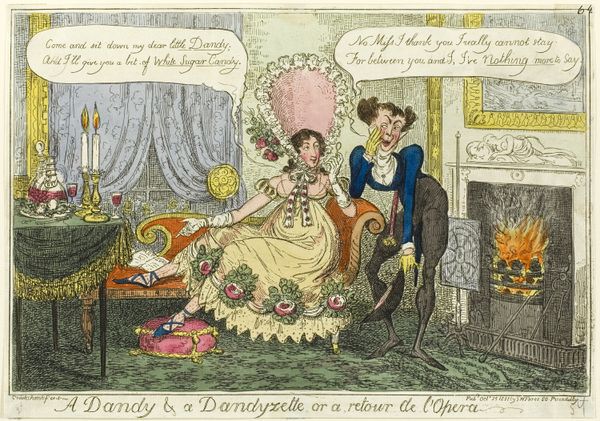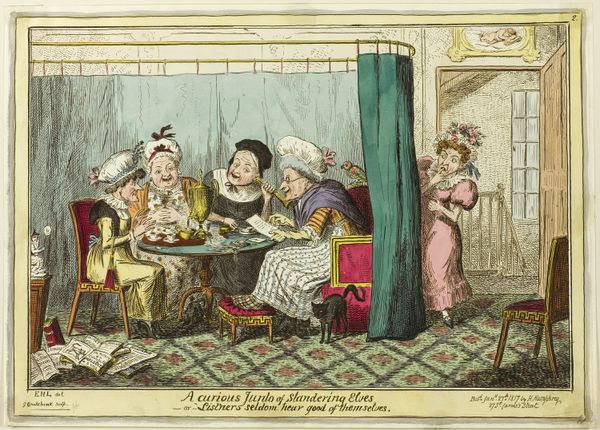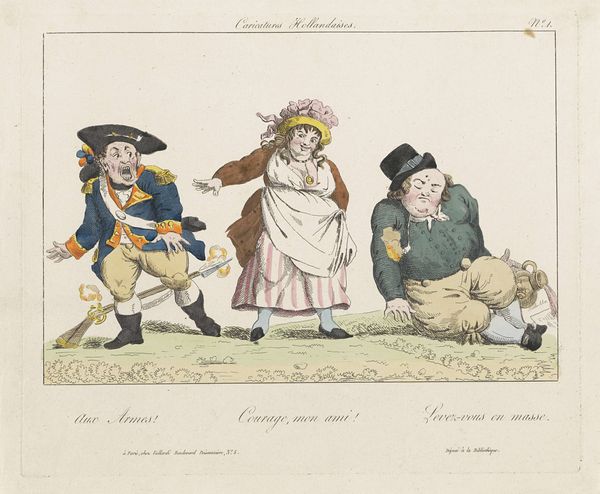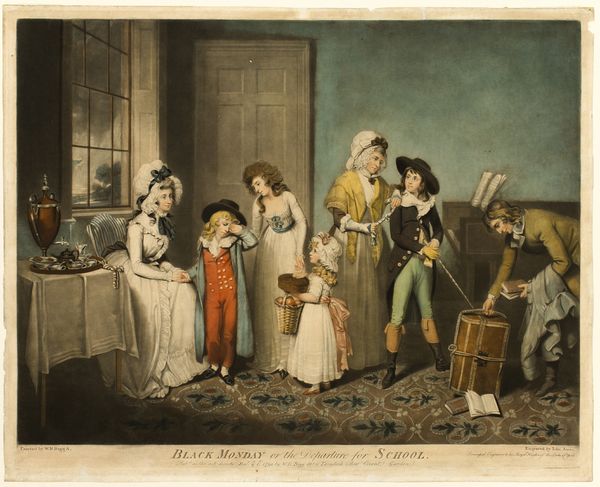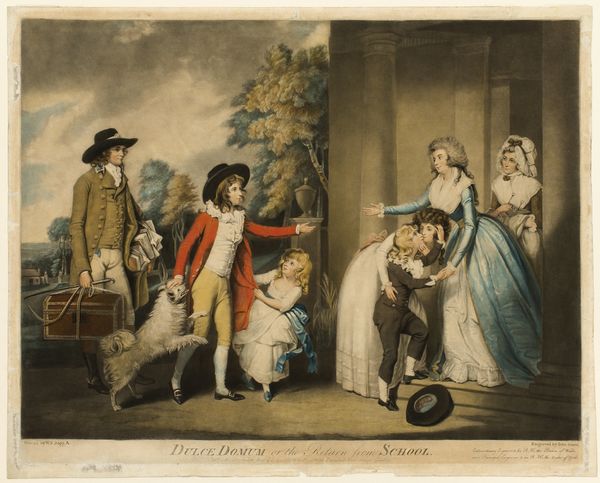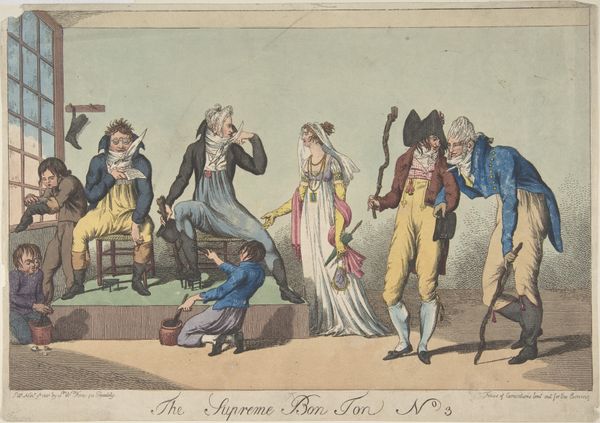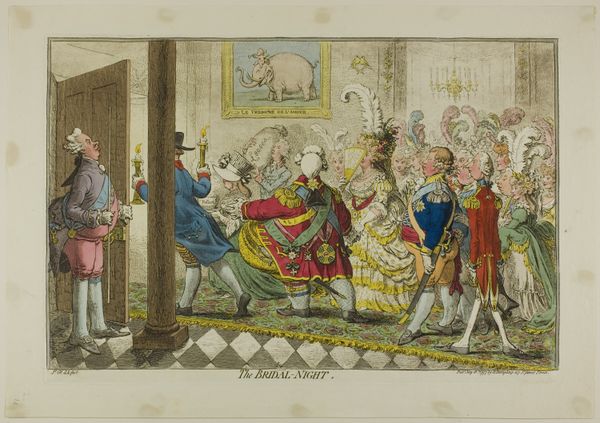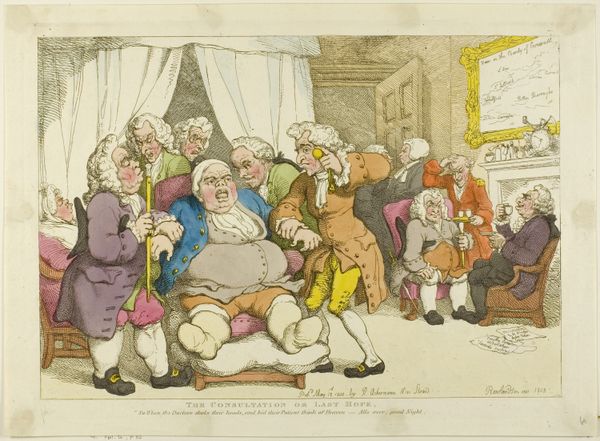
drawing, print, etching, pen
#
drawing
# print
#
etching
#
caricature
#
romanticism
#
pen
Dimensions: 270 × 374 mm (image); 277 × 381 mm (plate); 282 × 385 mm (sheet)
Copyright: Public Domain
Curator: Look at the etching with pen and watercolor called "The Return of Paris," possibly made around 1817 by George Cruikshank. It's currently held in the collection of the Art Institute of Chicago. The details, from the elaborate hats to the expressions, jump right out! Editor: The first thing that strikes me is the visual tension; the composition is split between these grounded, almost caricatured figures on one side and the extravagantly dressed individuals on the other. It evokes a sense of societal clash or unease. Curator: Indeed. Cruikshank was known for his caricatures and satirical prints that commented on social and political issues. This piece specifically seems to critique the shifting cultural landscape in post-Napoleonic Europe, and we must also observe how the method of printing itself, the layering of etching and then watercolor, contributes to the artwork. Editor: Absolutely. Consider the figures themselves; you have what seem to be working-class individuals confronting or being confronted by these members of the Neice, ostentatiously displaying their wealth. This artwork touches on issues of class, identity, and the fraught interactions between different social strata, making visible gender through its rendering of caricatural images in different garments and expressions. The print seems very much aware of the intersection of political life and what Foucault called “technologies of the self.” Curator: That interplay of the individual within a broader social setting—yes. You see it even in the choice of materials—etching as a repeatable medium makes this commentary accessible beyond a select few, democratizing the critique in a way only printmaking allows. What, in your view, might the dogs represent? Editor: Ha, good question! In that era dogs often served as symbols, sometimes of fidelity, other times as status symbols. I imagine here it might serve to emphasize loyalty. Its tiny stature juxtaposed to the bulk of the ladies of leisure only exaggerates that feeling of critique. Curator: Perhaps… well, it really is remarkable how Cruikshank layered both his pen and the social critique. Thinking about the labor behind this piece from conception, through etching, to distribution makes me see the satire even more pointed. Editor: Yes. This satirical rendering definitely captures a specific cultural moment, it is fascinating how the details speak to wider questions around social status, power, and the performance of identity that continue to be important topics. Curator: Well said! Thank you for illuminating those themes and their relationship to its making; it just goes to show that every stroke and social detail contributes to its story!
Comments
No comments
Be the first to comment and join the conversation on the ultimate creative platform.
